Installation, Start-up, Operating and
Service and Maintenance Instructions
NOTE: Read the entire instruction manual before starting the
installation.
TABLE OF CONTENTS
REQUIRED NOTICE FOR MASSACHUSETTS INSTALLATIONS
IMPORTANT . . . . . . . . . . . . . . . . . . . . . . . . . . . . . . . . . . . . . . . . . . . 2
SAFETY CONSIDERATIONS . . . . . . . . . . . . . . . . . . . . . . . . . . . . . 3
Table 1 – Minimum Clearances to Combustible Materials for All Units
4
INTRODUCTION . . . . . . . . . . . . . . . . . . . . . . . . . . . . . . . . . . . . . . . 5
Table 2 – Loose Parts Bag . . . . . . . . . . . . . . . . . . . . . . . . . . . . . . . 5
CODES AND STANDARDS. . . . . . . . . . . . . . . . . . . . . . . . . . . . . . . 6
ELECTROSTATIC DISCHARGE (ESD) PRECAUTIONS PROCE-
DURE . . . . . . . . . . . . . . . . . . . . . . . . . . . . . . . . . . . . . . . . . . . . . . . . . 6
ACCESSORIES . . . . . . . . . . . . . . . . . . . . . . . . . . . . . . . . . . . . . . . . . 7
LOCATION . . . . . . . . . . . . . . . . . . . . . . . . . . . . . . . . . . . . . . . . . . . . 7
AIR FOR COMBUSTION AND VENTILATION . . . . . . . . . . . . . . 8
Table 3 – Minimum Free Area Required for Each Combustion Air
Opening or Duct to Outdoors. . . . . . . . . . . . . . . . . . . . . . . . . . . . . 8
Table 4 – Minimum Space Volumes for 100% Combustion, Ventila-
tion and Dilution Air from Outdoors . . . . . . . . . . . . . . . . . . . . . . . 9
CONDENSATE TRAP. . . . . . . . . . . . . . . . . . . . . . . . . . . . . . . . . . . 10
CONDENSATE DRAIN CONNECTION . . . . . . . . . . . . . . . . . . . . 12
INSTALLATION . . . . . . . . . . . . . . . . . . . . . . . . . . . . . . . . . . . . . . . 15
Table 5 – Opening Dimensions - In. (mm) . . . . . . . . . . . . . . . . . 16
Table 6 – Air Filter Selection and Duct Sizing - In. (mm) . . . . . 18
Table 7 – Filter Media Pressure Drop (Clean) Versus Airflow - In.
W.C. (Pa) . . . . . . . . . . . . . . . . . . . . . . . . . . . . . . . . . . . . . . . . . . . 19
Table 8 – Filter Media Pressure Drop (Clean) Versus Face Velocity-
In. W.C. (Pa) . . . . . . . . . . . . . . . . . . . . . . . . . . . . . . . . . . . . . . . . 19
AIR DUCTS . . . . . . . . . . . . . . . . . . . . . . . . . . . . . . . . . . . . . . . . . . . 21
GAS PIPING. . . . . . . . . . . . . . . . . . . . . . . . . . . . . . . . . . . . . . . . . . . 21
Table 9 – Maximum Capacity of Pipe . . . . . . . . . . . . . . . . . . . . . 22
ELECTRICAL CONNECTIONS. . . . . . . . . . . . . . . . . . . . . . . . . . . 23
Table 10 – Electrical Data . . . . . . . . . . . . . . . . . . . . . . . . . . . . . . 23
VENTING. . . . . . . . . . . . . . . . . . . . . . . . . . . . . . . . . . . . . . . . . . . . . 27
Table 11 – Vent Termination Kit for Direct Vent (2-pipe) Systems28
Table 12 – Maximum Equivalent Vent Length - Ft. . . . . . . . . . . 37
Table 13 – Deductions from Maximum Equivalent Vent Length - Ft.
(M) . . . . . . . . . . . . . . . . . . . . . . . . . . . . . . . . . . . . . . . . . . . . . . . . 38
Table 14 – Maximum Allowable Exposed Vent Length in Uncondi-
tioned Space - Ft. / M. . . . . . . . . . . . . . . . . . . . . . . . . . . . . . . . . . 41
Table 15 – Hanger Spacing . . . . . . . . . . . . . . . . . . . . . . . . . . . . . 43
Table 16 – Approved Combustion-Air and Vent Pipe, Fitting and Ce-
ment Materials . . . . . . . . . . . . . . . . . . . . . . . . . . . . . . . . . . . . . . . 45
START-UP, ADJUSTMENT, AND SAFETY CHECK . . . . . . . . . 47
Table 17 – Altitude Derate Multiplier for U.S.A. . . . . . . . . . . . . 48
Table 18 – Gas Rate (CU ft./hr). . . . . . . . . . . . . . . . . . . . . . . . . . 50
Table 19 – Blower Off Delay Jumper Positions . . . . . . . . . . . . . 51
Table 20 – Air Delivery - CFM (With Filter) . . . . . . . . . . . . . . . 51
Table 21 – Orifice Size and Manifold Pressure (in. w.c.) for Gas Input
Rate
40,000 BTUH to 140,000 BTUH. . . . . . . . . . . . . . . . . . . . . . . . . 53
Table 22 – Orifice Size and Manifold Pressure (in. w.c.) for Gas Input
Rate
26,000 BTUH ONLY. . . . . . . . . . . . . . . . . . . . . . . . . . . . . . . . . . 54
SERVICE AND MAINTENANCE PROCEDURES. . . . . . . . . . . . 54
WINTERIZATION. . . . . . . . . . . . . . . . . . . . . . . . . . . . . . . . . . . . . . 61
SEQUENCE OF OPERATION . . . . . . . . . . . . . . . . . . . . . . . . . . . . 61
PARTS REPLACEMENT INFORMATION GUIDE . . . . . . . . . . . 66
MODEL NOMENCLATURE . . . . . . . . . . . . . . . . . . . . . . . . . . . . . 66
Most states in the USA and jurisdictions in Canada have laws that
require the use of Carbon Monoxide (CO) alarms with fuel burning
products. Examples of fuel burning products are furnaces, boilers, space
heaters, generators, water heaters, stoves/ranges, clothes dryers,
fireplaces, incinerators, automobiles, and other internal combustion
engines. Even if there are no laws in your jurisdiction requiring a CO
Alarm, it’s highly recommended that whenever any fuel burning product
is used in or around the home or business that the dwelling be equipped
with a CO Alarm(s). The Consumer Product Safety Commission
recommends the use of CO Alarm(s). The CO Alarm(s) must be
installed, operated, and maintained according to the CO Alarm
manufacturer’s instructions. For more information about Carbon
Monoxide, local laws, or to purchase a CO Alarm online, please visit the
following website. https://www.kidde.com.
A200326
Portions of the text and tables are reprinted from NFPA 54/ANSI Z223.1E, with permission of National Fire Protection Association, Quincy, MA
02269 and American Gas Association, Washington DC 20001. This reprinted material is not the complete and official position of the NFPA or ANSI
on the referenced subject, which is represented only by the standard in its entirety.
N95ESN
Single-Stage, High Efficiency, 4-Way Multipoise
35-in. (889 mm), Condensing Gas Furnace
WARNING
!
CARBON MONOXIDE POISONING HAZARD
Failure to follow this warning could result in personal injury and/or
death.
Carbon Monoxide (CO) is a colorless, odorless, and tasteless poisonous
gas that can be fatal when inhaled. Follow all installation, maintenance,
and service instructions. See additional information below regarding
the installation of a CO Alarm.
Use of the AHRI Certified TM Mark indicates
a manufacturer's participation in the program.
For verification of certification for individual
products, go to www.ahridirectory.org .
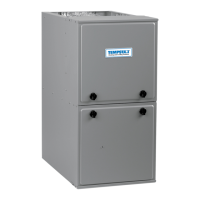
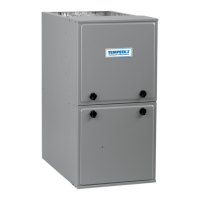



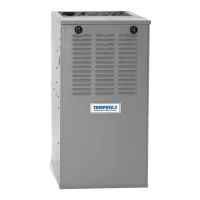


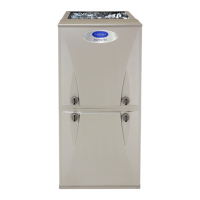


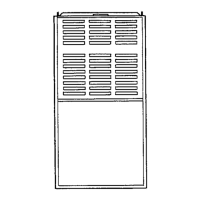
